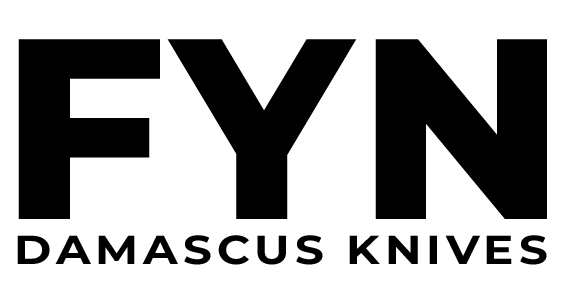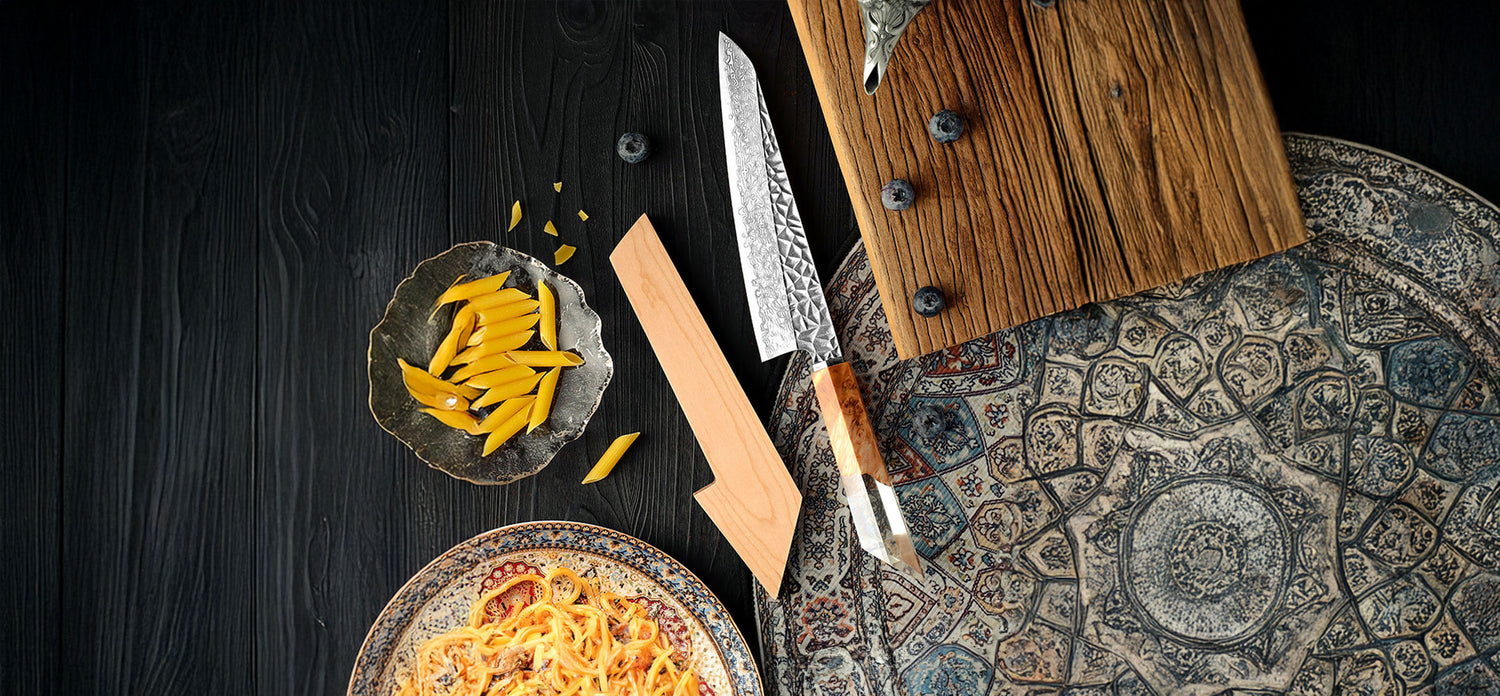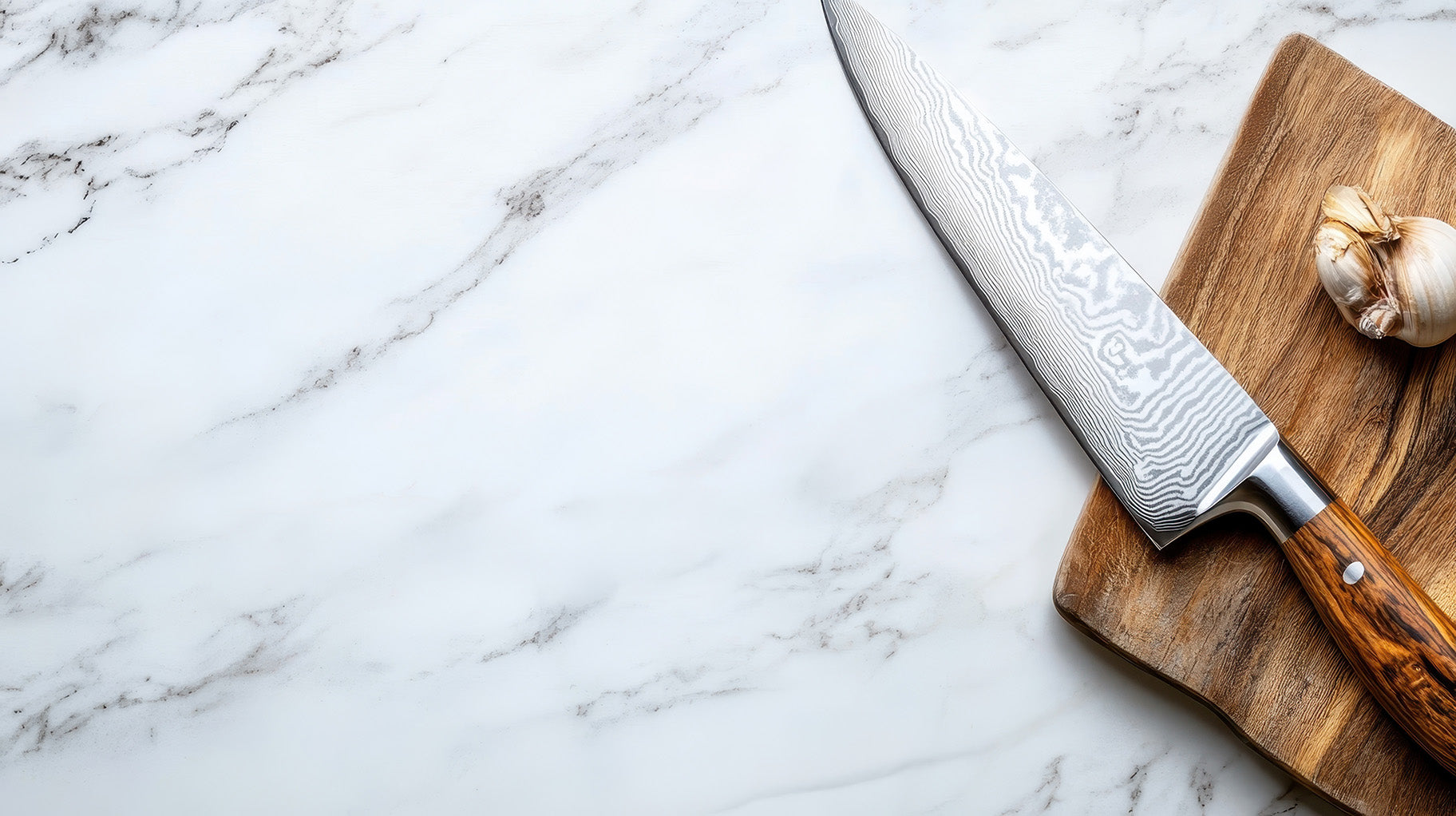
If you cook often — whether professionally or at home — the right knife doesn’t just make prep easier, it changes your entire kitchen experience.
One of the most debated choices in the knife world is Damascus steel vs stainless steel. And while both materials have their merits, Damascus knives stand out not just for their looks, but for their performance, craftsmanship, and real-world durability.
This article doesn’t hype Damascus as a luxury — it breaks down, fact by fact, why Damascus knives are a smarter long-term investment than basic stainless steel knives.
What Is a Damascus Knife?
Damascus steel isn’t just about beauty, it’s a product of history, craftsmanship, and high-performance engineering.
📜 A Brief History
The original Damascus steel dates back to around 300 B.C. and was used in sword-making across the Middle East and India. Today’s “Damascus” blades are typically pattern-welded steel, created by folding and forging multiple layers of steel together.
The result? A unique blend of hardness, flexibility, and unmistakable visual flair.
⚙️ How It's Made
Modern Damascus knives are made by stacking alternating layers of high-carbon and low-carbon steels, then forge-welding and folding them repeatedly. After being shaped and heat-treated, the blade is acid-etched to bring out the characteristic rippled patterns.
Some Damascus knives also feature a VG10 or AUS10 stainless core, sandwiched between softer steel layers — combining edge retention with corrosion resistance.
🧩 Key Traits
- Patterned appearance: Each knife has a unique wave or swirl.
- Exceptional hardness: 60–62 HRC on the Rockwell scale.
- Superior edge retention: Can stay sharp much longer than basic stainless blades.
- Premium craftsmanship: Often handmade or artisan-produced.
What Is a Stainless Steel Knife?
Stainless steel is a broad term for steel alloys that contain at least 10.5% chromium, which gives them their rust-resistant properties. These knives are workhorses — found in homes, restaurants, butcher shops, and survival kits across the world.
⚙️ Common Stainless Steel Alloys
- 420 or 440A: Basic, softer steels used in budget knives.
- 440C: Harder and more wear-resistant.
- AUS-8: Japanese stainless with balanced performance.
- VG10: High-end Japanese stainless used in both stainless and Damascus knives.
- X50CrMoV15: A staple of German knife manufacturing.
🧩 Key Traits
- Excellent corrosion resistance: Perfect for humid kitchens.
- Easy to sharpen and maintain.
- Cost-effective: Wide range from budget to mid-tier.
Damascus vs Stainless Steel: Fact-Based Comparison
Here’s a real-world side-by-side comparison grounded in metallurgy and culinary testing:
| Feature | Damascus Knife | Standard Stainless Steel Knife |
|---|---|---|
| Edge Retention | Excellent (often 60–62 HRC) – stays sharper longer | Average (52–56 HRC) – dulls quicker |
| Blade Sharpness | Razor-like due to thin grind & hard core | Thicker grind – struggles with precision cuts |
| Durability | High – balanced toughness with hardness | May chip or roll if thin; needs frequent touchups |
| Corrosion Resistance | High (if stainless core used) | High |
| Craftsmanship | Hand-forged, artisan-made | Mass-produced, often stamped |
| Cost Over Time | High upfront, but rarely replaced | Lower cost, but may need replacing every 1–3 yrs |
📌 Fun Fact: In CATRA lab tests, knives with high-carbon stainless Damascus cores held an edge nearly 3x longer than common stainless kitchen knives.
Steel Hardness and Why It Matters in the Kitchen
Understanding HRC Ratings
HRC (Rockwell Hardness Scale) measures how hard a steel is. Most basic stainless knives score 52–56 HRC, while Damascus knives with premium cores often score 60+.
- Low HRC (52–56) = easier to sharpen, but dulls faster
- High HRC (60–62) = holds edge longer, more precise slicing
Real-World Impact:
- Chopping onions or tomatoes with a dull knife? You’ll crush them.
- A Damascus knife stays sharp longer, so your slices stay clean and your prep time is faster.
Appearance: Beauty with Purpose
Yes, Damascus knives look beautiful — but those rippling patterns aren’t just cosmetic. They’re the result of the forging process itself, and they:
- Help reduce friction while slicing
- Show off unique craftsmanship (no two are identical)
- Hide minor scratches, unlike polished stainless
For chefs who care about presentation — not just of the food but their tools — Damascus knives are functional art.
Maintenance & Sharpening
Damascus Knife Care
- Must be hand-washed and dried immediately
- Benefits from occasional oiling to protect the core
- Sharpened with whetstones for best results
- Holds edge well, so sharpening is needed less often
Stainless Knife Care
- Often dishwasher safe
- May be sharpened more often due to soft edge
- Easy maintenance but more frequent over time
Verdict: If you care for your knives, Damascus will reward you with a sharp edge for years with less effort overall.
Which One Should You Choose?
If you want a workhorse you can use every day without worry, go stainless knife. If you’re after performance, beauty, and edge retention go for Damascus Knife.
Think of it like this:
- Stainless Steel = A SUV
- Damascus Steel = A hand-crafted performance car
Both take you from prep to plate it just depends on how you like to drive.






Leave a comment
This site is protected by hCaptcha and the hCaptcha Privacy Policy and Terms of Service apply.